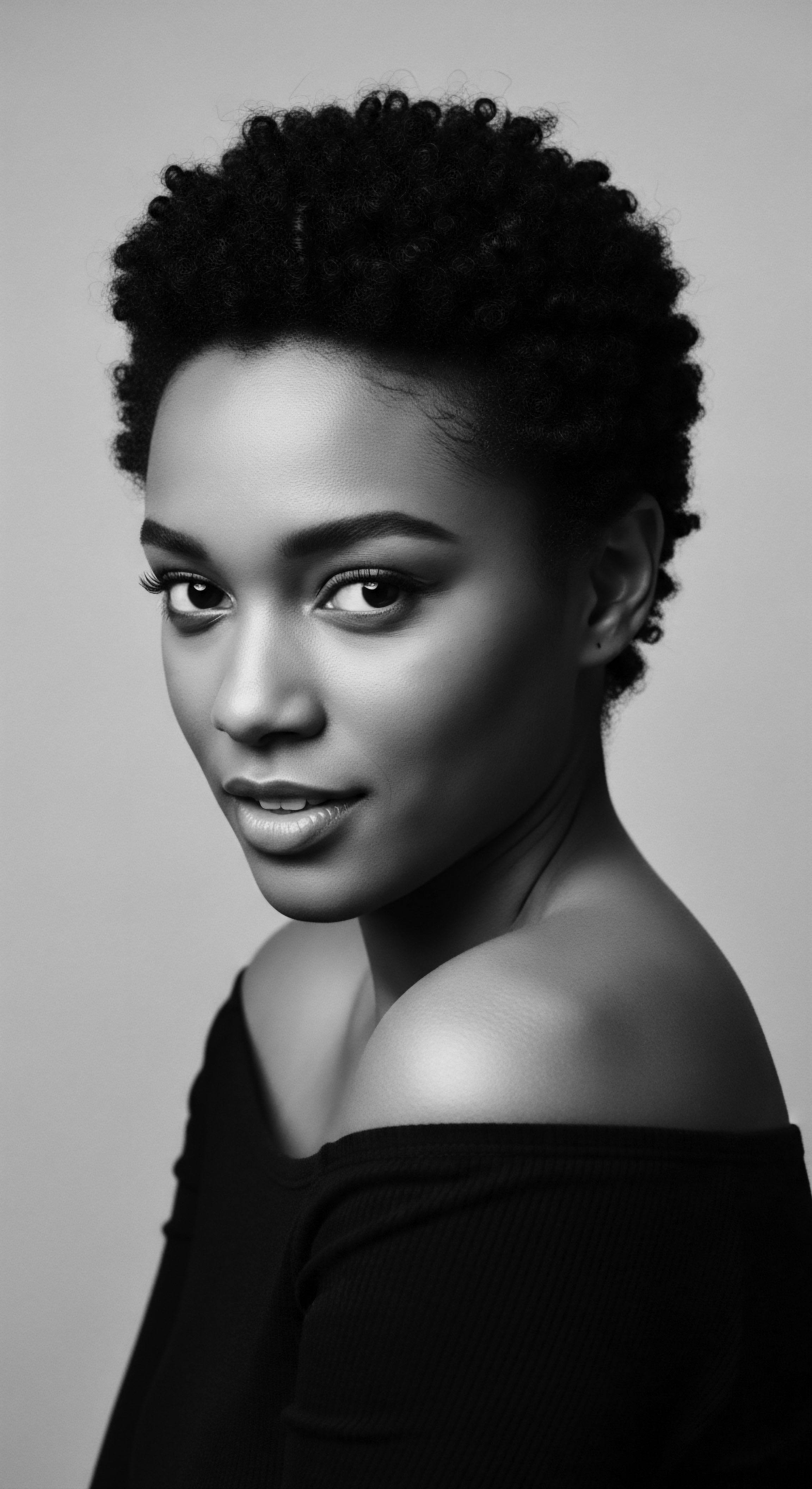
Roots
From the intricate spiral of a single strand to the cascading coils of a crown, textured hair holds within its very structure echoes of ancestral memory, a genetic story whispered across generations. Yet, this profound inheritance, so rich in its natural design, has for centuries contended with the distorting lens of historical prejudice. To truly comprehend the modern struggle for acceptance, one must travel back through time, tracing the subtle, yet potent, ways past biases continue to shape perception, often distancing current understanding from textured hair’s deep heritage.

A Deep Look at Hair Form
The very architecture of textured hair, with its elliptical follicle shape and complex curl pattern, renders it distinct. Unlike straight or wavy hair, which grows from round or oval follicles, textured hair emerges from a flatter, ribbon-like follicle, causing the hair shaft to twist and coil as it grows. This inherent helical growth contributes to its characteristic volume and spring. From a scientific vantage point, these attributes are merely variations within human biology, adaptations perhaps to diverse climates, yet they became a focal point for misinterpretation and denigration.
Ancient African societies, however, understood this form not as a flaw, but as a source of strength, a connection to the very earth’s rhythms. Hair served as a natural barometer of health and spiritual alignment, its varied textures speaking silent volumes about lineage and individual identity.
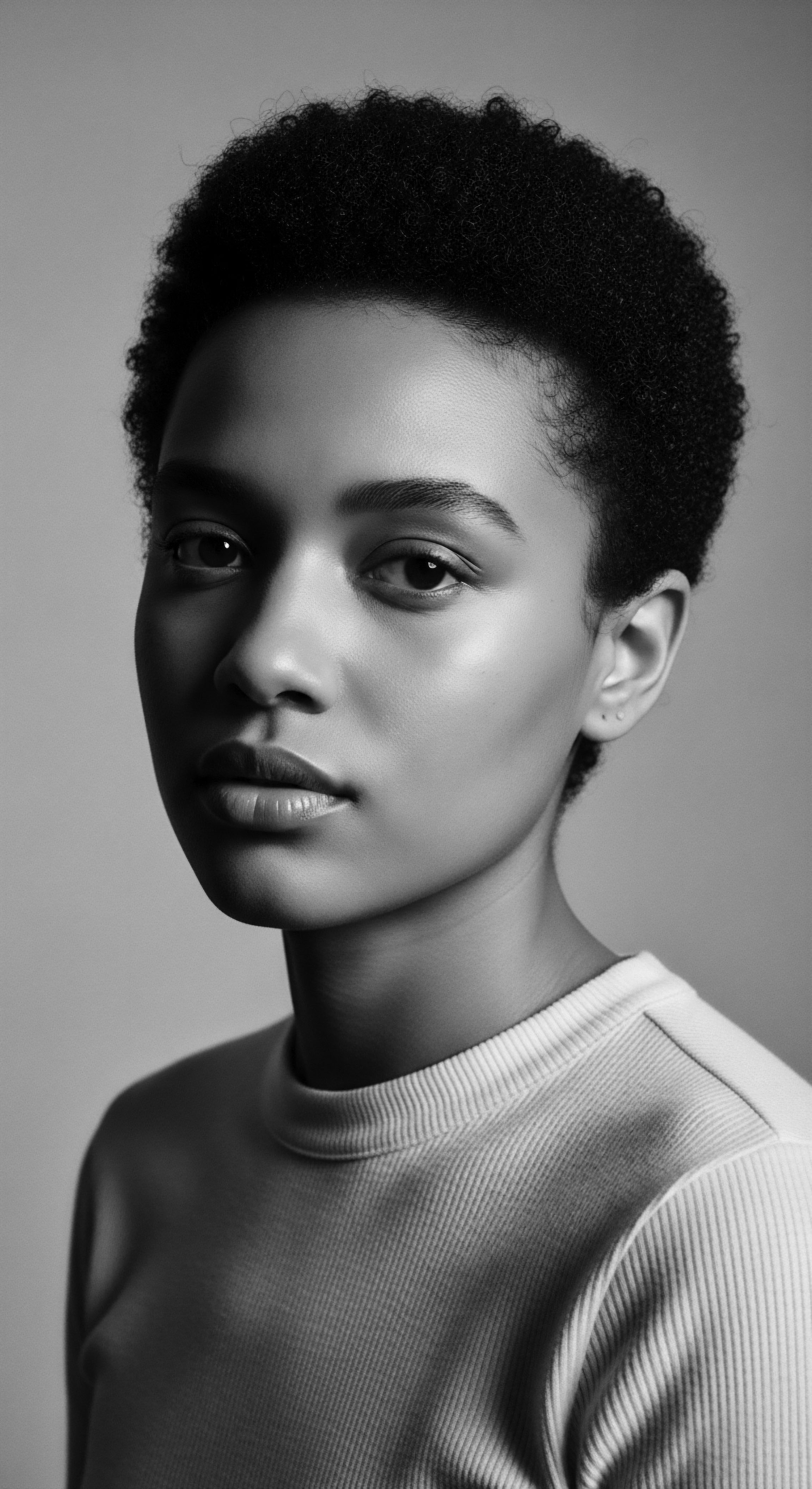
Categorizing Coils and Kinks
The desire to categorize hair, seemingly innocuous, took a darker turn in the annals of history. Early attempts at hair classification were not benign scientific endeavors. They were, instead, tools forged in the crucible of racist ideologies. Consider the work of Eugen Fischer, a German Nazi scientist, who in 1908, developed a “hair gauge” to classify Namibians’ hair texture, aiming to determine their “proximity to whiteness”.
This pseudo-scientific pursuit served to justify oppression, positioning tightly coiled textures as further from a supposed ideal. Such systems created a hierarchical framework that placed textures closer to European standards at the top, a clear lineage of texturism that endures today. The very language used to describe textured hair became laden with derogatory terms, marking it as “nappy,” “kinky,” or “unruly,” expressions that chipped away at self-worth and cultural pride.
The origins of hair typing systems are steeped in racist efforts to classify and devalue textured hair, linking it to proximity to whiteness.
This historical categorization, while outwardly appearing to define, in truth sought to diminish. It severed understanding of the rich variety within Black and mixed-race hair, reducing a spectrum of beauty to a singular, imposed standard. This systematic devaluation has cast a long shadow, influencing how society, and even individuals within textured hair communities, perceive and describe their own hair.
The journey toward a true acceptance of textured hair necessitates dismantling these inherited, biased classification methods and recognizing the intrinsic beauty and natural variation of all hair types. As we move towards a more respectful lexicon, acknowledging the prejudiced past of hair categorization becomes an important act of reclamation.
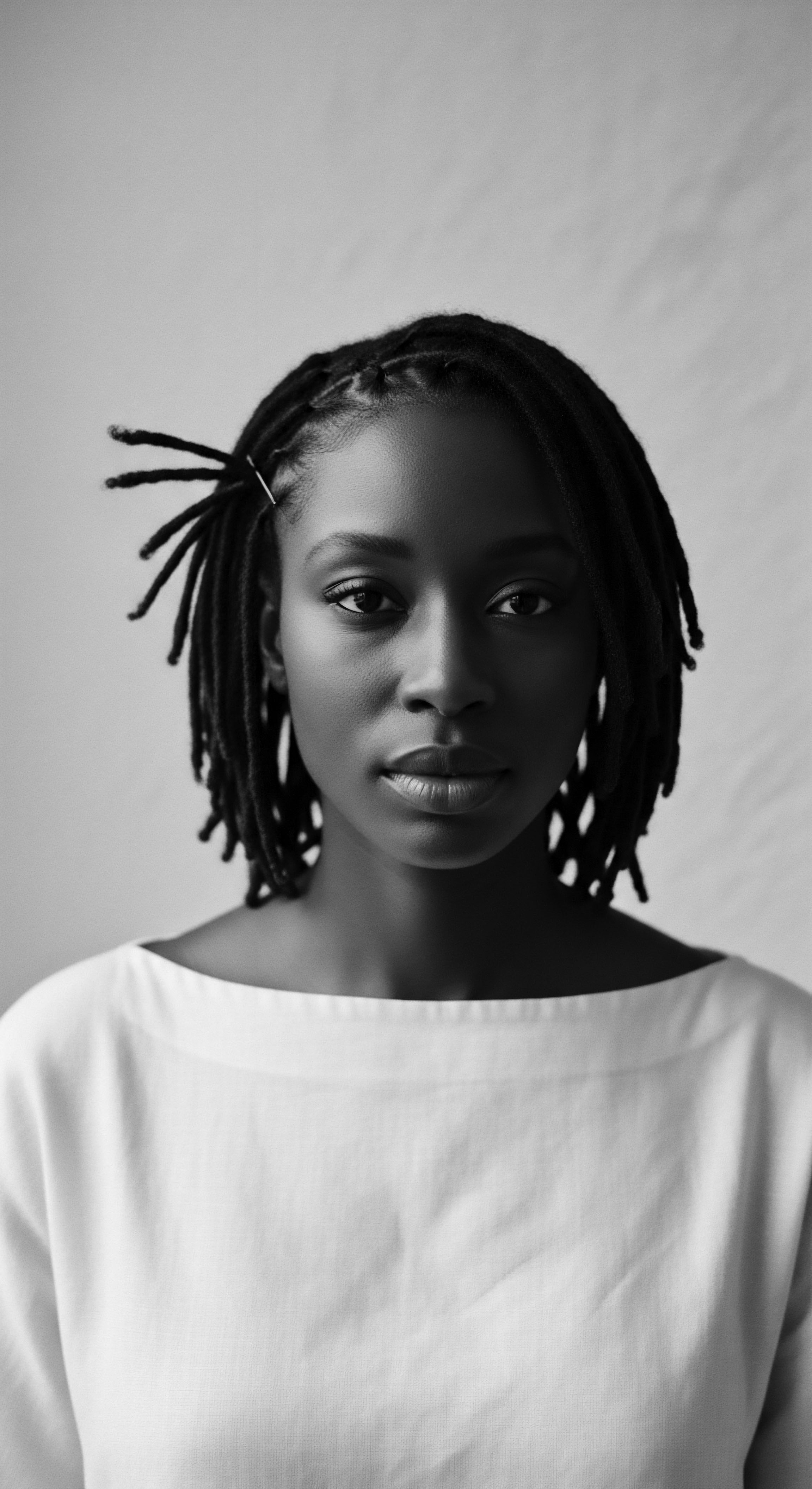
Words from Our Past
The lexicon surrounding textured hair has undergone a complex transformation, mirroring societal shifts and persistent biases. In many African cultures, hair terms were expressions of social standing, age, and spiritual connection. For instance, specific braiding patterns indicated a person’s marital status or coming-of-age rites within Yoruba cosmology, where hair held sacred importance. During the transatlantic slave trade, the deliberate act of shaving heads upon capture was a direct assault on identity, stripping enslaved individuals of their connection to lineage and culture, reducing them to anonymous goods.
This act was not merely about hygiene; it was a profound act of dehumanization, a systematic effort to erase a person’s historical ties embedded within their hair. The very materials and time needed for ancestral hair care were denied, leading to matted, damaged hair, which was then negatively pathologized by enslavers.
The forced separation from traditional practices meant the rich vocabulary of hair care was suppressed, replaced by terms of derision. The term “nappy,” once possibly descriptive of tightly coiled hair, became a pejorative, weaponized to diminish and control. The linguistic landscape shifted, reflecting a new, imposed reality where Eurocentric beauty standards reigned supreme.
The movement to reclaim natural hair in the 1960s, driven by the “Black Is Beautiful” assertion, began to reappropriate some of these terms, transforming “nappy” into a symbol of pride, a portmanteau of “natural” and “happy” in Francophone countries, for example. This linguistic reclamation is a testament to the enduring spirit of resilience and a conscious effort to restore positive associations with deeply textured hair.
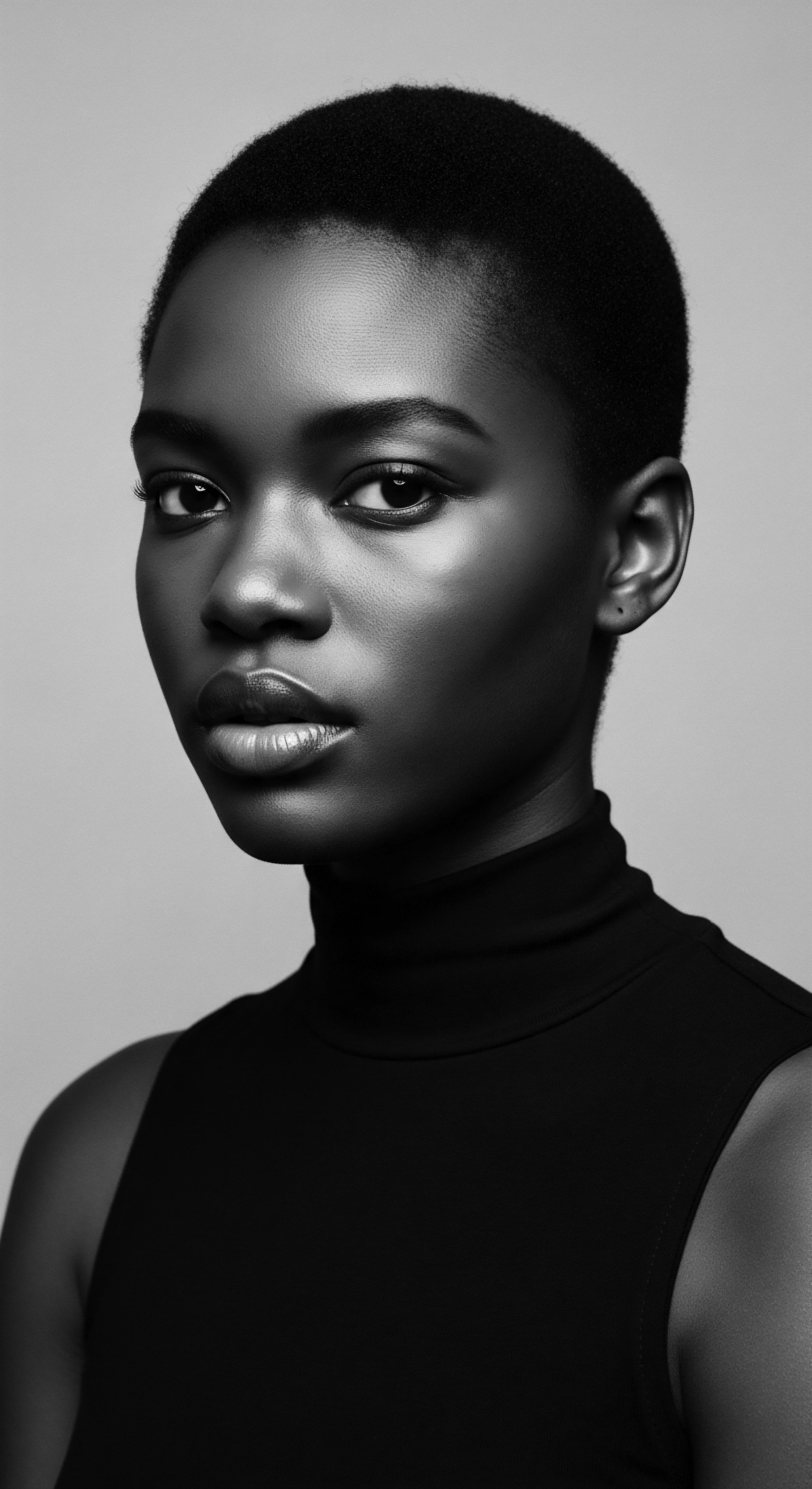
Life Cycles, Earth’s Influence
Hair growth follows universal cycles of anagen, catagen, and telogen, yet the unique structure of textured hair, particularly its tightly coiled form, presents specific considerations regarding these phases. The twists and turns along the hair shaft create points of weakness, making it more prone to breakage if not handled with care. This anatomical reality, however, was historically misconstrued as inherent fragility, rather than a characteristic requiring specific, thoughtful maintenance. Traditional African practices understood these nuances implicitly.
They recognized the importance of gentle handling, nourishing rituals, and protective styles that safeguarded the hair throughout its growth cycle, extending length retention rather than prioritizing extreme curl definition. Consider the Basara Tribe of Chad, who historically applied an herb-infused mixture, known as Chebe, to their hair weekly. This practice, passed down through generations, was specifically for length retention, protecting the hair from breakage and environmental stressors, rather than altering its innate structure. This ancestral wisdom reveals a deep understanding of hair health and growth, a connection to the earth’s bounty that far predates modern scientific explanation. The deliberate cultivation of plant-based oils and butters, like shea butter, marula oil, and African black soap, were not arbitrary choices, but deeply considered remedies that supported hair health, reflecting a harmony between human needs and natural resources.
| Aspect of Hair Hair Structure |
| Ancestral Understanding A varied expression of beauty and identity, adapted to environment. Each curl and coil holds deep cultural meaning. |
| Colonial Bias "Unruly" or "unprofessional," requiring alteration to fit Eurocentric norms. |
| Aspect of Hair Hair Care |
| Ancestral Understanding Rituals for nourishment, strength, and length retention, using natural materials like Chebe and shea butter. |
| Colonial Bias Negated or suppressed, leading to forced shaving and denial of traditional tools and practices. |
| Aspect of Hair Hair as Identity |
| Ancestral Understanding A symbol of status, lineage, spirituality, and community connection, a living archive of heritage. |
| Colonial Bias A marker of inferiority, intended to dehumanize and strip cultural ties. |
| Aspect of Hair This table shows how inherent qualities of textured hair were reinterpreted and devalued through a biased lens. |

Ritual
The historical journey of textured hair reveals how deeply rooted biases have warped perceptions of beauty and care practices. Our ancestors held hair in sacred esteem, viewing styling not merely as aesthetic adornment but as a ceremonial act, often a link to the spiritual realm and a clear statement of identity within the community. These practices formed a collective wisdom, a profound understanding of hair as a living part of self and heritage. Yet, the advent of colonial rule and its imposed standards sought to dismantle these very rituals, fostering a disassociation from ancestral methods in favor of European ideals.

Protective Styling Through Time
Long before the contemporary natural hair movements, protective styling was a foundational element of hair care in African societies. Styles like braids, twists, and cornrows were not simply fashionable; they served as a shield against environmental elements and facilitated length retention, all while conveying complex social messages. The intricacy of a braid could signify marital status, age, or a person’s role within their community. During the devastating period of transatlantic slavery, these protective styles took on an additional, profound significance.
Braided patterns, disguised as simple adornments, became coded maps for escape routes, hiding grains of rice or seeds to sustain those seeking freedom. This historical example, though born from oppression, speaks volumes about the ingenuity and resilience embedded within the heritage of textured hair care. Despite this ingenuity, colonial biases systematically labeled these traditional styles as “unprofessional” or “unkempt,” creating a lasting stigma that forced many to abandon them in public spaces, particularly as they navigated newly constructed societal hierarchies.
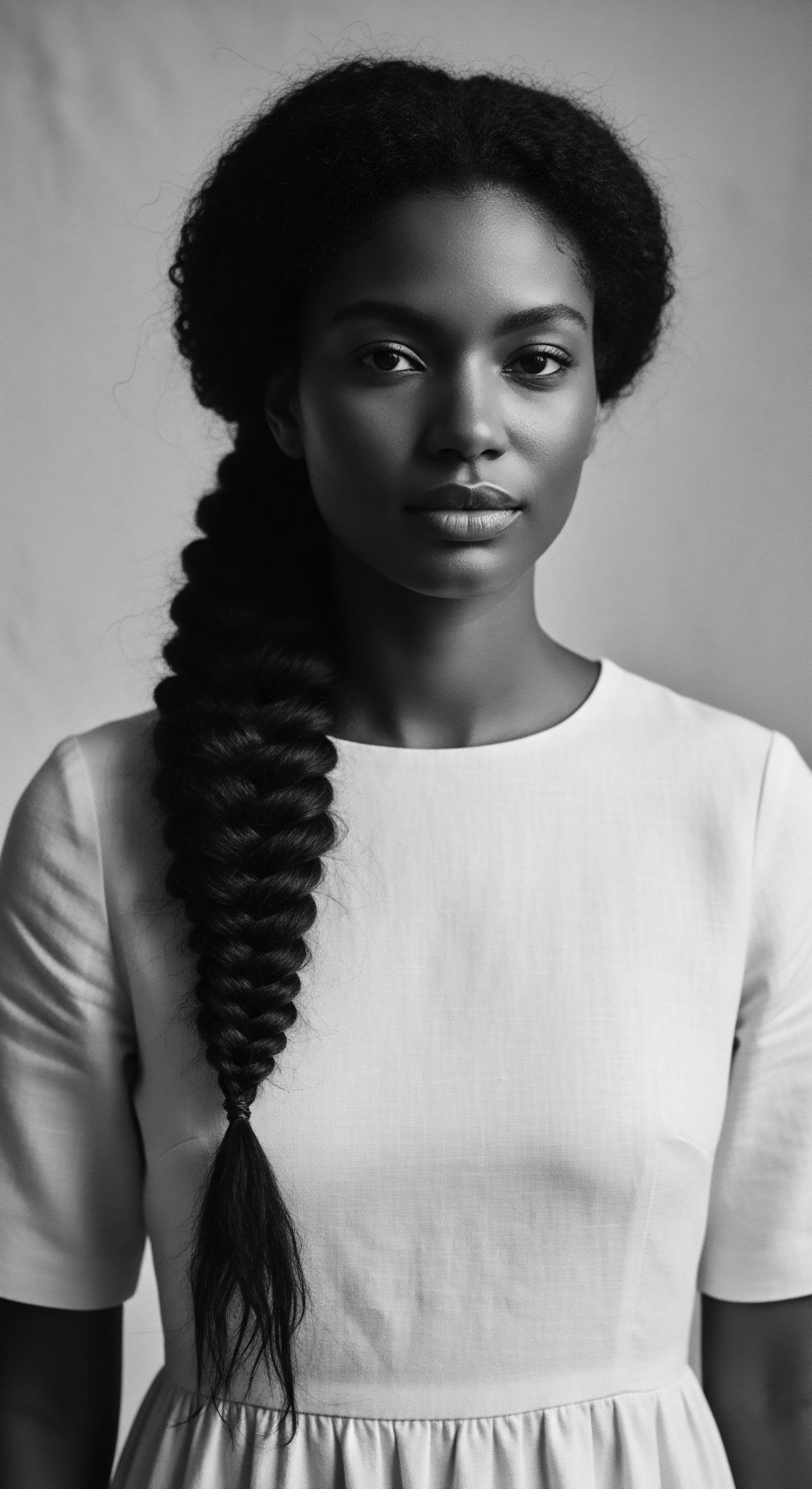
Natural Definition and Traditional Methods
The pursuit of defined curls and coils, so central to modern textured hair care, has its echoes in traditional methods that prized natural form. Ancestral techniques often centered on enhancing the hair’s innate beauty through gentle manipulation and the application of natural substances. For instance, women of Ethiopian and Somali descent historically used a homemade “hair butter” of whipped animal milk and water to condition and maintain their hair, yielding excellent results. This points to a nuanced understanding of moisture and protection that fostered hair health.
The contrast between these historically informed practices and the chemically aggressive methods introduced later by colonizers or designed to meet imposed Eurocentric standards is stark. The emphasis shifted from nurturing what was naturally present to forcibly altering it, a shift that carried both physical and psychological tolls.
Traditional hair care practices were not mere cosmetic choices, but rich cultural rituals that defined identity and aided survival.
The prevalence of hot combs in the late 1800s, and later chemical relaxers in the early 1900s, speaks to a societal pressure to achieve a straightened appearance. This was often marketed as a means to “manage” hair deemed “difficult,” perpetuating the idea that natural textures were somehow inherently problematic. The adoption of such methods, while offering a path to social acceptance in a biased world, simultaneously distanced individuals from the care traditions passed down through generations. Reconnecting with traditional methods today means recognizing the wisdom of natural ingredients and techniques that honor the hair’s structure rather than seeking to suppress it.
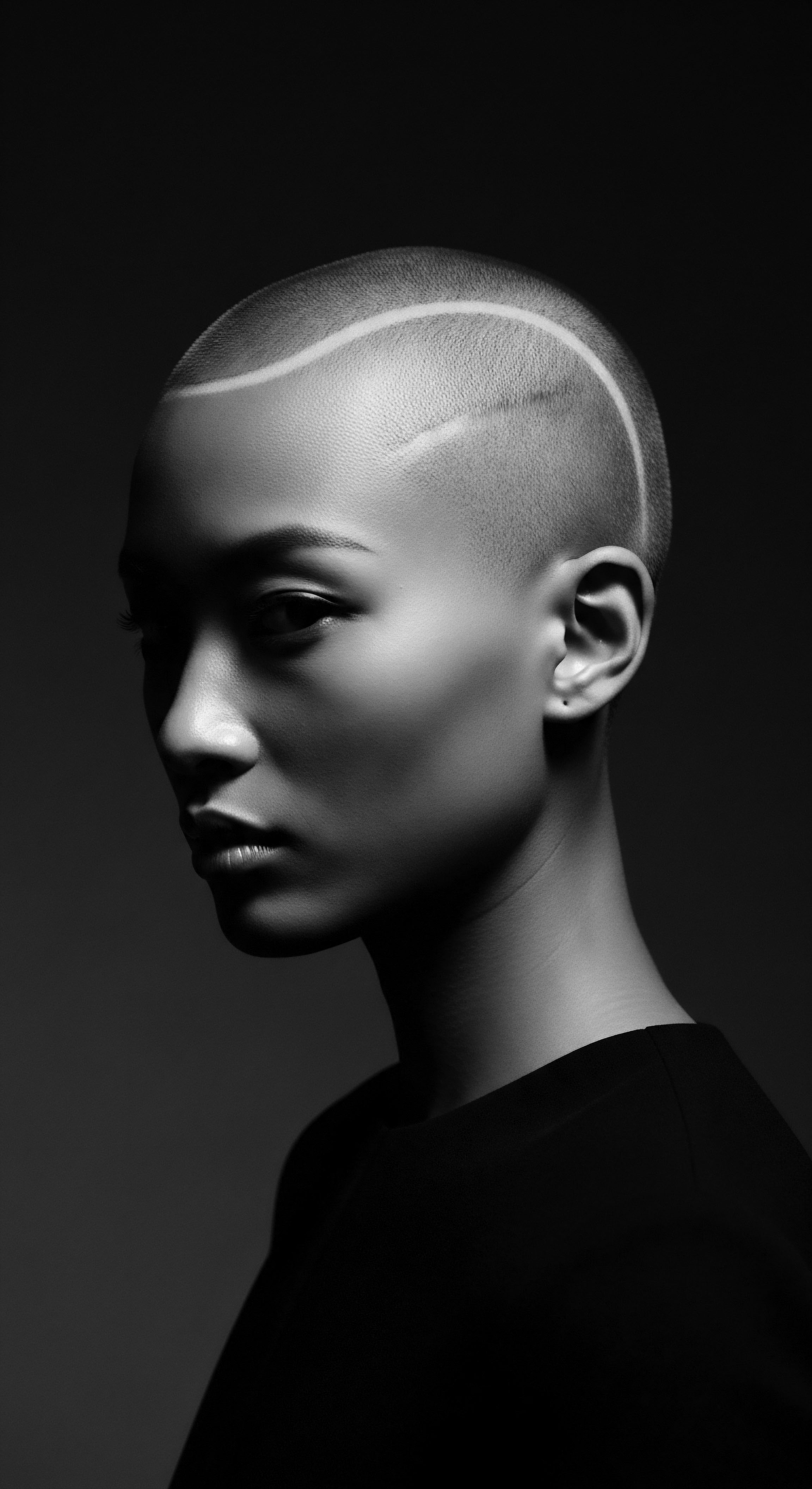
Wigs and Hair Extensions
The use of wigs and hair extensions also carries a complex heritage for textured hair. In some traditional African societies, hair adornments, including extensions made from natural fibers or human hair, served symbolic purposes, indicating status, wealth, or readiness for marriage. These were often integrated seamlessly into existing styles, enhancing natural beauty rather than concealing it. However, under colonial influence and the pressure of white aesthetic ideals, wigs and extensions increasingly became tools for assimilation, a way to conform to imposed standards of “presentable” hair.
Free Black women in colonial Louisiana, for instance, in response to the oppressive Tignon Laws of 1786, which mandated they cover their natural hair, transformed the headwrap into a statement of creative resistance, adorning them with colorful fabrics and jewels. While the Tignon itself was not a wig, the underlying principle of covering natural hair to conform or subvert demonstrates how external pressures dictated styling choices. This historical context reveals how adaptive and resilient Black women were, using mandated coverings as a canvas for defiant self-expression. The choices were no longer solely about cultural symbolism but about navigating a world that penalized natural forms. The tension between cultural expression and forced conformity continues to influence the use of wigs and extensions in modern times.
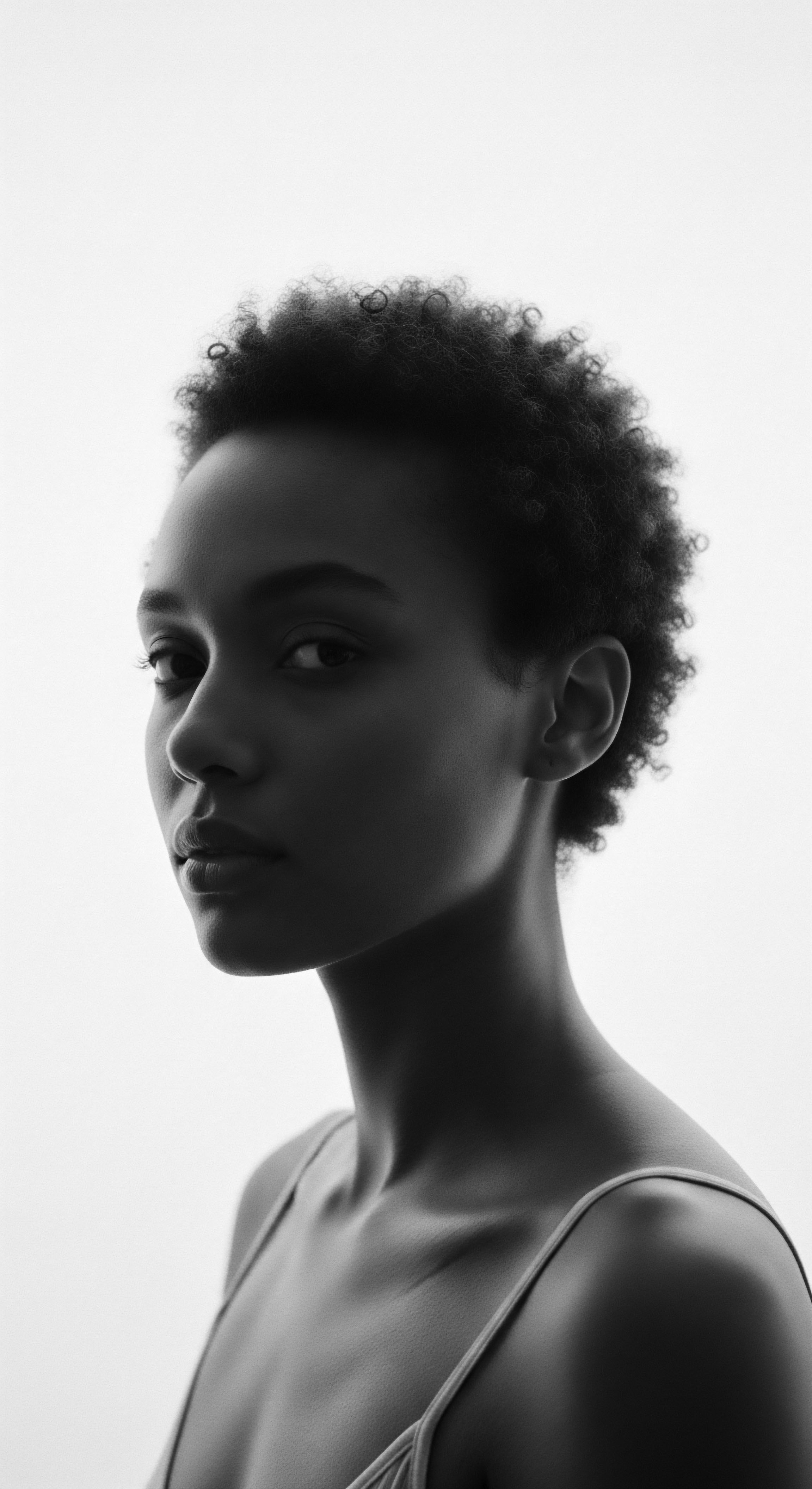
Heat Styling and Thermal Reconditioning
The advent and widespread adoption of heat styling and chemical thermal reconditioning methods represent a significant departure from many ancestral hair care practices. While some historical methods used gentle heat (such as warming oils) for conditioning, the intense, direct heat from pressing combs (popularized in the late 1800s) and flat irons, followed by chemical relaxers, marked a profound shift. These technologies offered the promise of straightened hair, aligning with the dominant Eurocentric beauty standard. The widespread use of such tools, often with little understanding of their damaging effects on the unique disulfide bonds within textured hair, led to extensive breakage, thinning, and chemical burns.
This era ushered in a cycle of damage and repair, driven by the societal message that straight hair was “good hair” and a prerequisite for social and professional acceptance. The industry that grew around these products often overlooked the long-term health of textured hair, prioritizing a temporary aesthetic over its enduring vitality. Recognizing this history is important for understanding the health disparities many textured hair communities face, advocating for hair care that prioritizes well-being over imposed beauty standards. This historical trajectory prompts a thoughtful consideration of how modern science can validate gentler, ancestral methods, rather than perpetuating damaging routines.

The Complete Textured Hair Toolkit
The tools used for hair care are not simply instruments; they carry cultural memory and reflect the evolution of practices. Ancestral toolkits were deeply connected to the natural world. Consider the traditional African combs, often intricately carved, which were not only for detangling but served as cultural artifacts, some even communicating tribal identities. The resourceful use of natural materials for various hair adornments, from beads to shells, was widespread.
These historical tools stand in contrast to the specialized, often aggressive, implements designed for straightening or chemically altering textured hair that gained prominence in the colonial and post-colonial eras. The pressing comb, the relaxer brush, and harsh fine-toothed combs, while serving a purpose within the paradigm of forced conformity, moved away from the gentle, nourishing touch of heritage practices.
A true appreciation of textured hair heritage calls for a re-evaluation of our tools, embracing those that honor the hair’s natural form and health. This includes wide-tooth combs, soft brushes, and the hands themselves, which, in many African communities, were the primary tools for braiding and styling, passing down wisdom through touch. The revival of traditional techniques often brings with it a rediscovery of tools that align with a philosophy of care, rather than control.
For instance, the traditional thread-wrapping style known as “Irun Kiko” was not only visually striking but also held meaning tied to femininity and rites of passage, and relied on specific, gentle wrapping materials rather than harsh instruments. This rich legacy of tools reminds us that care is a holistic practice, deeply connected to community, and passed down from generation to generation.
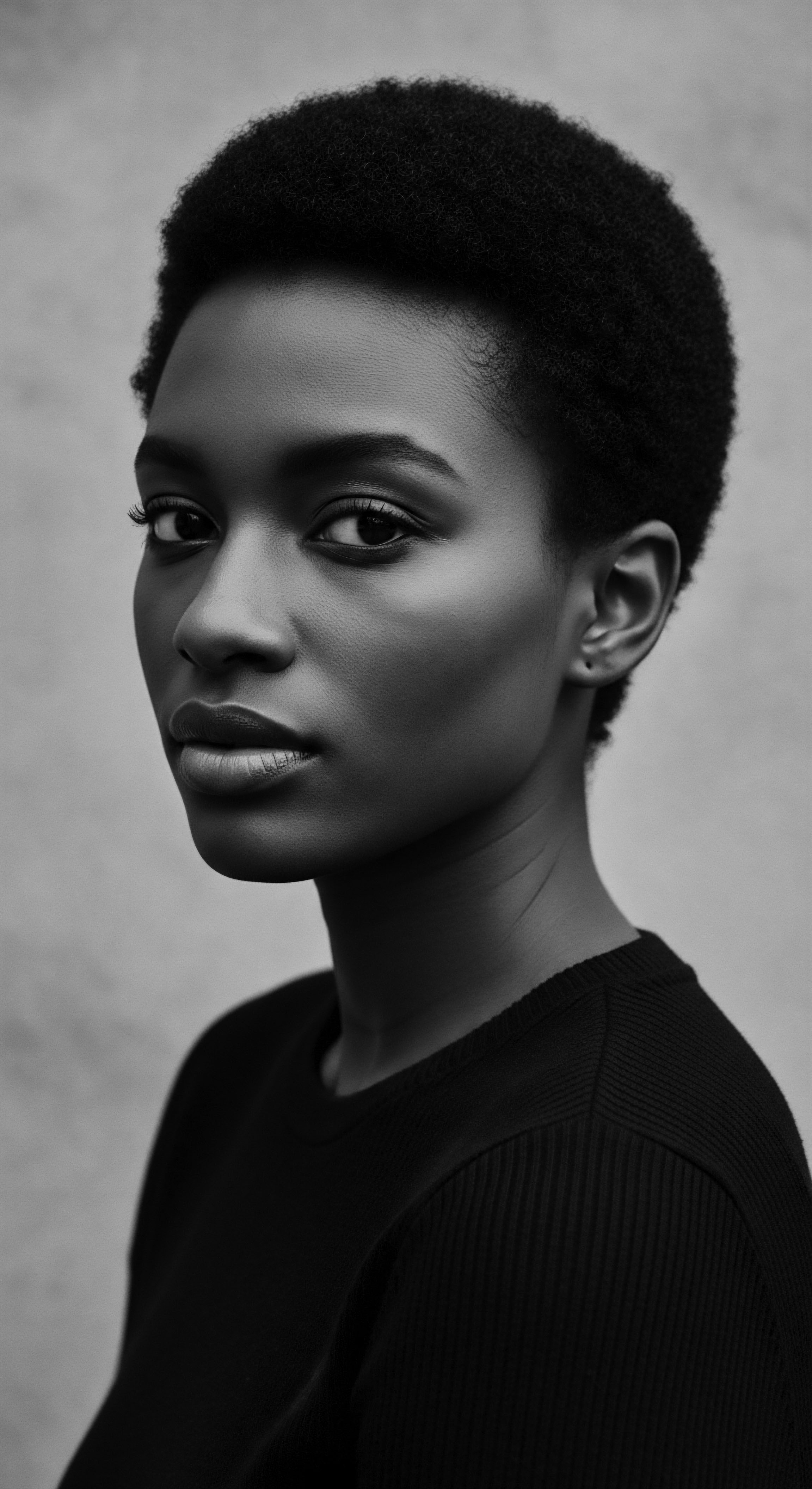
Relay
The long shadow of historical biases continues to stretch across contemporary society, deeply influencing textured hair acceptance. The colonial-era devaluation of coiled hair, once a tool of oppression, has been passed down through generations, shaping perceptions in schools, workplaces, and daily interactions. This persistent bias forces individuals to navigate a world that often penalizes their natural self, leading to significant psychological and social costs.

Building Personalized Textured Hair Regimens
The development of personalized textured hair regimens today often stands at a fascinating crossroads of ancestral wisdom and modern scientific understanding. Historically, hair care was a collective act, a communal ritual where knowledge of local herbs, oils, and techniques was shared and refined across generations. For example, the use of shea butter, African black soap, and various plant-based oils like marula and baobab for their moisturizing and protective qualities, reflects centuries of empirical knowledge. These traditional practices were not simply about aesthetics; they were about maintaining hair health in often challenging environments, ensuring its vitality and length.
Today, scientific analysis often validates the efficacy of these traditional ingredients. Baobab oil, rich in vitamins and fatty acids, strengthens strands and protects against environmental damage, mirroring its ancient use. Similarly, the use of Chebe powder from Chad, known for increasing hair thickness and retaining moisture, demonstrates an ancestral understanding of hair needs that modern science now seeks to unpack.
The imposition of Eurocentric beauty standards, however, fractured this traditional knowledge system. The rise of chemical relaxers and straightening tools in the 20th century provided a path for assimilation, yet often at the expense of hair integrity and a disconnect from ancestral ways of care. This led to a period where many textured hair regimens centered on chemical alteration, inadvertently contributing to damage and a cycle of dependence on products designed to suppress natural form. Reclaiming agency in hair care involves looking back to these heritage practices, understanding their principles, and blending them thoughtfully with contemporary scientific insights to craft regimens that truly nourish textured hair.
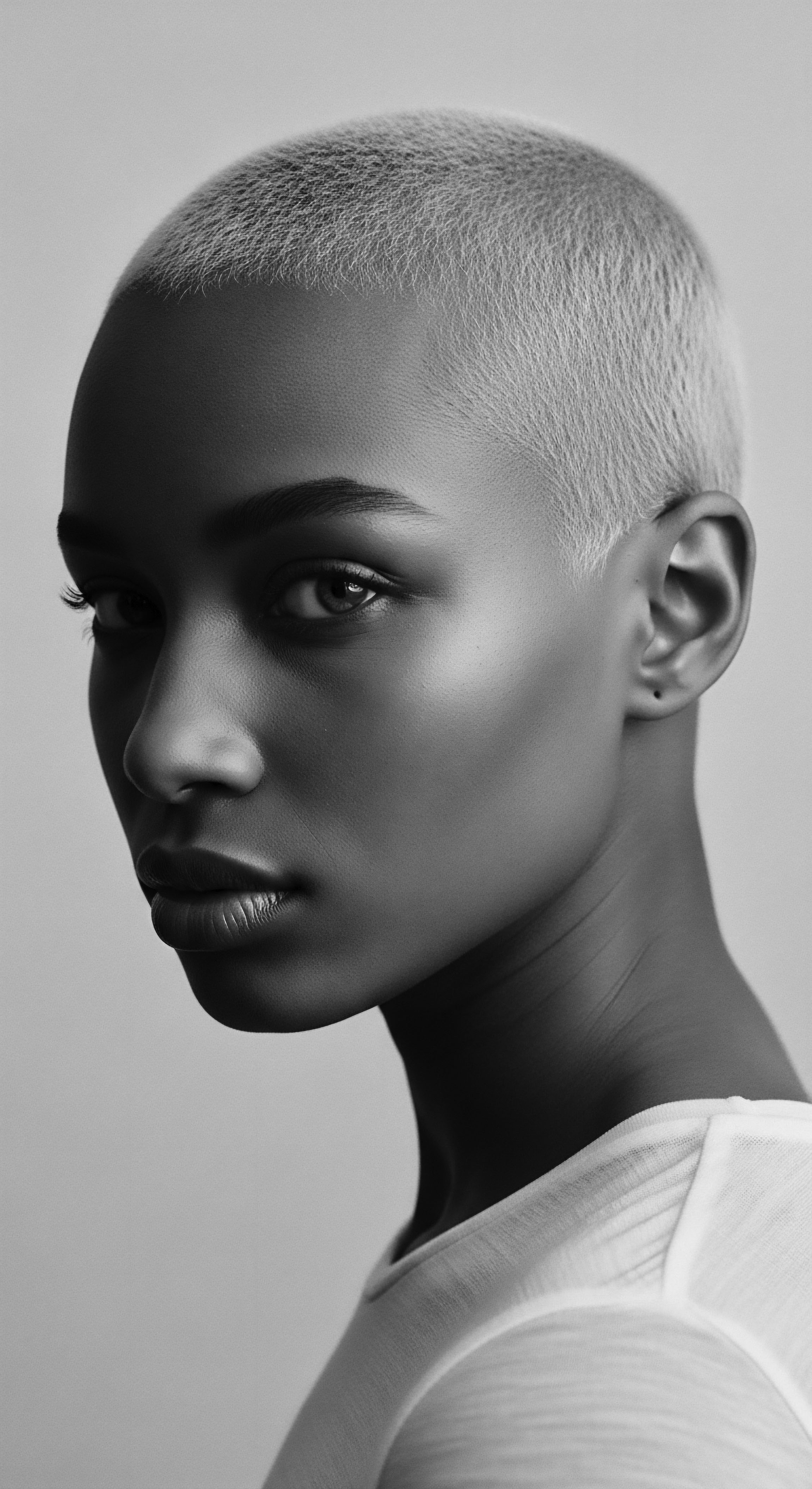
The Nighttime Sanctuary and Bonnet Wisdom
The practice of protecting textured hair during sleep, particularly with the use of bonnets or headwraps, carries a deep lineage that extends beyond mere modern convenience. This practice, often seen as a contemporary hair care tip, is in fact an echo of ancestral wisdom regarding preservation. In various African cultures, head coverings held immense social, spiritual, and practical significance, protecting hair from dust, sun, and tangling. The headwrap, in particular, became a symbol of resilience and creative resistance during periods of oppression, as exemplified by the Tignon Laws in 18th-century Louisiana.
Enacted in 1786 by Governor Esteban Miró, these laws compelled free Black women, whose elaborate natural hairstyles were seen as threatening to the colonial social order and attracting white men, to cover their hair with a “tignon” or headscarf. The intention was to mark them as inferior, visibly distinguishing them from white women. Yet, these women transformed the mandate into an act of defiance, using luxurious fabrics and ornate tying methods, turning a symbol of subjugation into one of beauty, wealth, and cultural pride. This powerful act of turning oppression into artistic expression underscores the enduring legacy of head coverings and their wisdom in safeguarding both hair and identity. The modern bonnet, while serving a practical purpose of moisture retention and frizz prevention, implicitly carries this historical weight, a quiet nod to generations who understood the need to protect their crowning glory from external forces, visible and invisible alike.

Addressing Hair Concerns Through Heritage
Addressing common textured hair concerns often requires more than surface-level solutions. The historical biases that deemed textured hair “problematic” or “unmanageable” contributed to a scarcity of appropriate products and a lack of understanding regarding its unique needs, leading to generations struggling with issues like dryness and breakage. Ancestral traditions, however, possessed inherent strategies for common concerns.
- Dryness and Brittleness ❉ Many African societies utilized a range of natural butters and oils. Shea Butter, widely used across West Africa, provided deep moisture and protection from harsh environmental conditions. Marula Oil from Southern Africa, rich in antioxidants, helped protect hair from environmental damage. These practices focused on sealing in moisture and nourishing the scalp, principles still vital today.
- Breakage and Length Retention ❉ The emphasis on protective styles like braids and twists, often accompanied by oiling rituals, directly addressed breakage by minimizing manipulation and friction. The Chebe Powder from Chad, for instance, is traditionally applied with oils to aid in length retention by strengthening the hair shaft and reducing shedding.
- Scalp Health ❉ Ingredients such as African Black Soap, made from plantain skins and cocoa pods, were used for gentle cleansing without stripping natural oils, promoting a healthy scalp environment. Rhassoul Clay from Morocco served as a purifying and conditioning treatment, cleansing without harsh sulfates.
These traditional solutions, honed over centuries, stand in stark contrast to the often harsh chemical treatments introduced during periods of intense hair discrimination. The mental health toll of hair bias, including internalized racism and chronic stress from feeling compelled to alter hair for conformity, cannot be understated. Reclaiming ancestral remedies and the wisdom embedded within them represents not only a path to healthier hair but also a powerful act of self-acceptance and cultural reconnection, challenging the enduring legacy of devaluation.
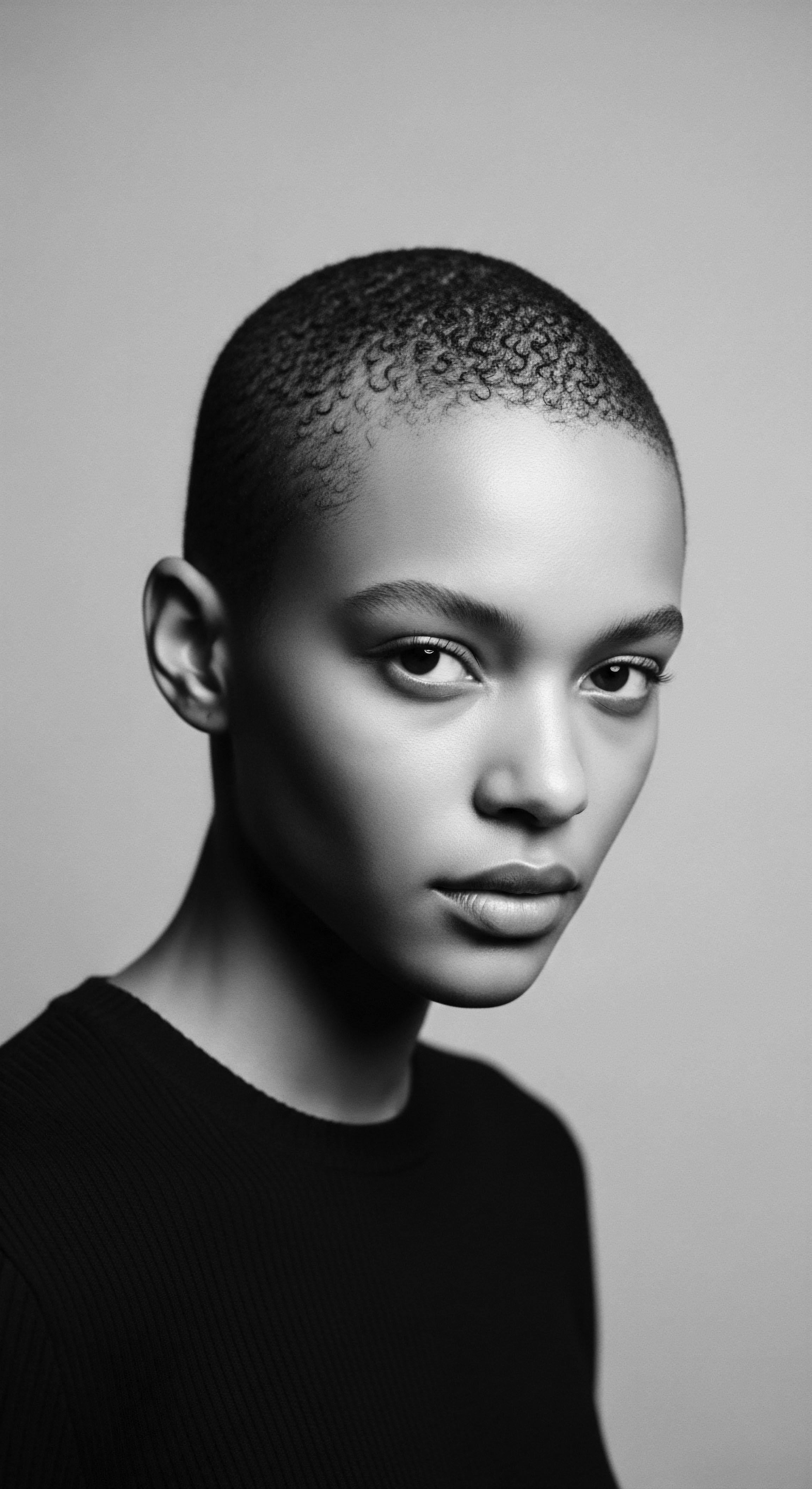
Holistic Influences on Hair Health
The wellness of textured hair extends beyond topical applications; it is intrinsically linked to holistic well-being, a concept deeply embedded in ancestral philosophies. Traditional African practices often viewed the body, spirit, and mind as interconnected, with hair serving as a spiritual antenna connecting individuals to ancestors and the divine. Therefore, hair care was a ritual, a moment of intentional connection, rather than a mere chore. The act of communal hair braiding, for example, was a social event, a space for storytelling, the sharing of genealogies, and the transmission of cultural knowledge.
This collective aspect of care fostered strong community bonds and reinforced identity. The systematic disruption of these practices through enslavement and colonization severed not only physical care routines but also the spiritual and communal ties that nourished hair from within.
The mental and emotional burden of hair discrimination, rooted in historical biases, continues to affect individuals today. Research indicates that Black women often feel pressure to chemically straighten their hair to avoid discrimination in professional and educational settings, a process that can be physically damaging and psychologically draining. This pressure can lead to internalized racism, negative self-image, and anxiety about how one’s hair is perceived. The movement towards embracing natural hair today is not only a beauty trend but a profound act of self-acceptance and a reclamation of ancestral heritage.
It represents a conscious choice to align with traditional wisdom, seeking wellness through practices that honor the hair’s natural form and its profound cultural significance. This shift recognizes that hair health is a reflection of a deeper, more comprehensive well-being, an echo of the holistic view held by our forebears.

Reflection
The journey of textured hair acceptance is a story still being written, yet its opening chapters are firmly rooted in the echoes of ancestral resilience and the enduring impact of historical biases. From the initial European classifications that sought to diminish its natural splendor, to the legal mandates and societal pressures that demanded its concealment or alteration, textured hair has stood as both a target of oppression and a beacon of steadfast selfhood. Our understanding now begins to mend what centuries of misperception frayed, allowing us to see each curl and coil not as something to be managed into submission, but as a living archive, a repository of identity, wisdom, and an unbreakable spirit.
The threads of historical bias, though subtle in their modern manifestations, still influence workplaces, schools, and self-perception, often creating an unseen burden. Yet, the persistent reclamation of traditional practices, the conscious celebration of diverse textures, and the growing collective voice advocating for respect represent a profound return to source. This is more than a cultural moment; it is a homecoming, a recognition that the true acceptance of textured hair is intertwined with honoring the profound heritage it carries. It is an acknowledgment that the beauty of a strand is measured not by its conformity to an external ideal, but by the authenticity of its growth and the strength of the legacy it represents.
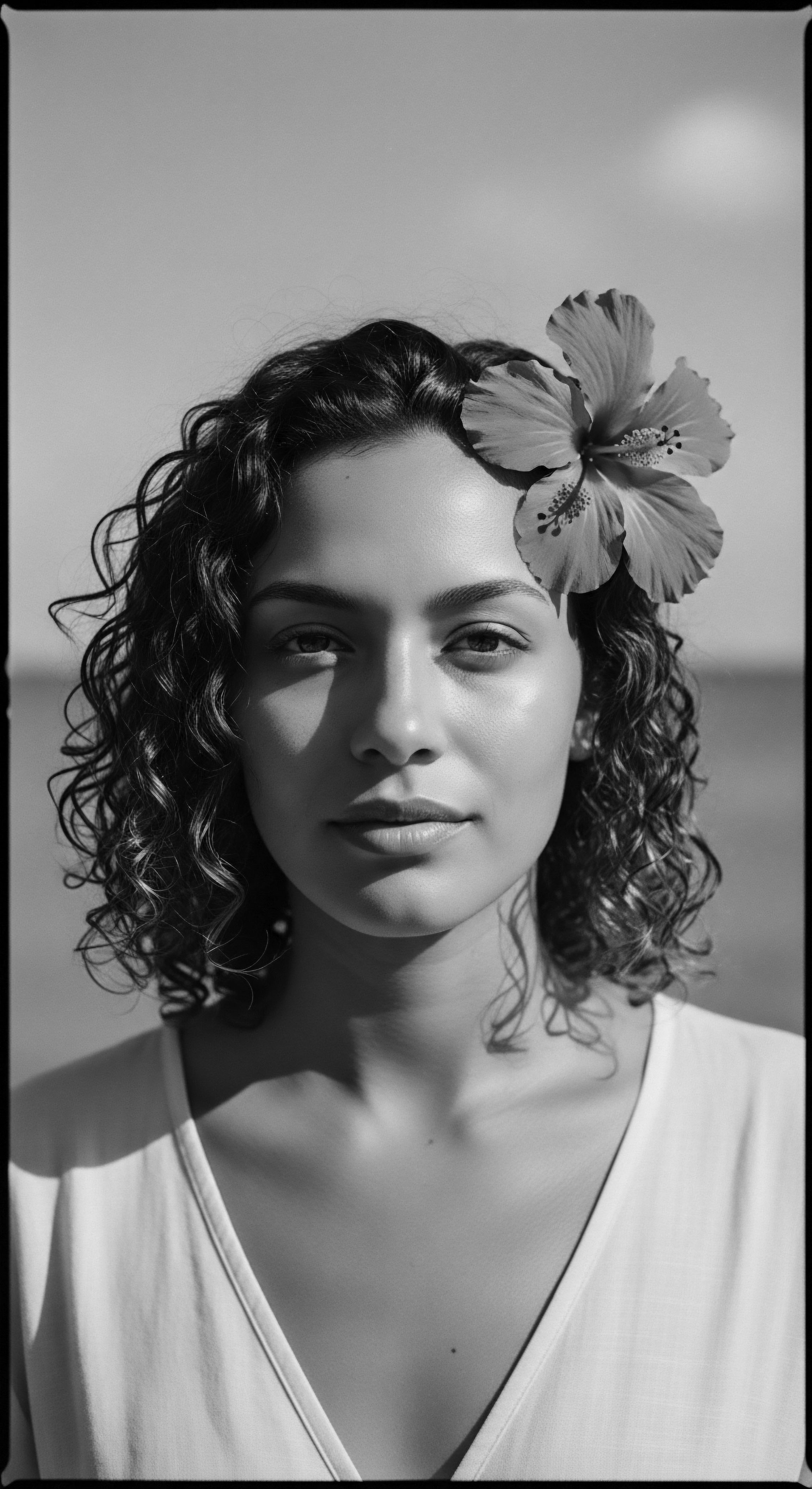
References
- Byrd, A. D. & Tharps, L. L. (2001). Hair Story ❉ Untangling the Roots of Black Hair in America. St. Martin’s Press.
- Johnson, D. & Bankhead, T. (2014). Hair It Is ❉ A Sociocultural Examination of Hair and Identity. Journal of Pan African Studies.
- Patton, T. O. (2006). Hey Girl, Am I More Than My Hair? African American Women and Their Hair. Hampton Press.
- Gould, V. M. (1998). “Challenging the Status Quo ❉ Free Women of Color in Antebellum New Orleans.” In Stealing a Little Freedom ❉ Portraits of the Free Black Community in Nineteenth-Century New Orleans, edited by Kimberley S. Hanger and Virginia M. Gould. University Press of Florida.
- Mbilishaka, A. M. (2019). Don’t Get It Twisted ❉ Untangling the Psychology of Hair Discrimination Within Black Communities. American Journal of Orthopsychiatry.
- Rosette, A. S. & Dumas, T. L. (2007). The Hair Dilemma ❉ Conform to Mainstream Expectations or Emphasize Racial Identity. Duke Journal of Gender Law & Policy.
- Essel, O. Q. (2021). Conflicting Tensions in Decolonising Proscribed Afrocentric Hair Beauty Culture Standards in Ghanaian Senior High Schools. International Journal of Research and Scientific Innovation.
- Fischer, E. (1908). Anthropologie und Ethnographie Afrikas. Handbuch der Tropenkrankheiten.
- Walker, A. (1997). Andre Talks Hair. Simon & Schuster.
- Thompson, S. (2009). CROWN Act ❉ The Legal Landscape of Hair Discrimination. Harvard Journal of Law & Gender.
